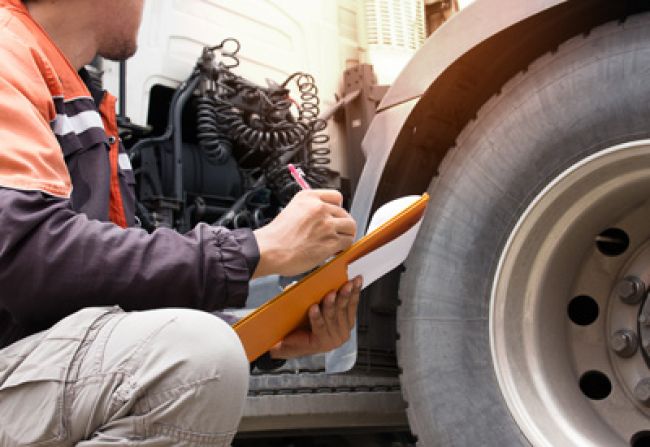
Mistakes to Avoid When Outsourcing Maintenance
Outsourcing preventive maintenance and unscheduled repairs on light-duty units can help utility fleets minimize downtime and focus on the more complex mission-critical and specialized equipment in their operations.
It’s easy to rent a car or pickup truck if a light-duty asset is in the shop or down for a long period of time, explained Paul Jefferson, fleet manager for OG&E Fleet Services in Oklahoma. “Bucket trucks, trenchers [and] line trucks are a little more difficult to rent. We have tools and materials on pieces of equipment like that, so we can do maintenance in-house and control the timeline of the work,” he said.
Keeping services in-house rather than outsourcing them also can help to ensure that safety remains a top priority when working on these assets.
“The utility industry as a whole requires a very high level of safety training, and this education extends to the in-house technicians,” said Charlie Guthro, vice president of global strategic services for fleet management company ARI (www.arifleet.com).
But if fleets determine they need to outsource some of their work, how do they make the most of it? UFP recently spoke with several industry experts who shared their tips, including mistakes to avoid.
Think Strategically
Organizations that explore outsourcing often are focused on near-term cost containment and cost reduction opportunities, according to Paul Lauria, president of Mercury Associates (www.mercury-assoc.com), a fleet management consulting firm.
However, he pointed out, fleets also should be thinking strategically about outsourcing – for example, about the best mix of in-sourced and outsourced fleet maintenance repairs and activities to meet fleet users’ needs – and about the relationship between outsourcing and other fleet management activities.
“If a company’s primary objective in exploring outsourcing is to ascertain if they can save money, then it’s very important that the utility be able to quantify the avoidable cost of continuing to perform fleet management functions in-house with the same level of quality,” Lauria said. “Will outsourcing enable you to maintain your fleet for more or less than this amount, and how will it affect the operating units that rely on the fleet to fulfill their missions?”
Equally importantly, will outsourcing maintenance and repair work save money or improve vehicle reliability if the company has, say, a poor fleet replacement program?
“If a utility company has developed a big backlog of replacement needs, shifting responsibility for maintenance and repairs to a third party is not going to eliminate that backlog,” Lauria said. “What it may do, however, is force that company to face the fact that underspending on fleet replacement increases repair costs. Having a third party in the mix definitely makes it harder to sweep poor fleet management practices under the rug.”
Outsource on Your Terms
Another pitfall to avoid is blindly accepting a recommended contract and pricing structure from a vendor; these structures likely will be more beneficial to the supplier than the fleet.
Fleets must educate themselves on how to properly structure a contract for maintenance services, which will then influence the structure of the solicitation for proposals to provide those services.
“We’re strong proponents of performance-based contracts that have financial incentives built into the agreement to incentivize the service provider to meet or exceed certain performance standards and that penalize those providers if they fall short,” Lauria said.
OG&E’s Jefferson advised negotiating terms, such as door rates and labor rates, before sending any work to an outside vendor.
Communicate Expectations
Keeping the lines of communication open and staying informed are critical to maintaining a successful partnership with an outsourced vendor.
“Don’t let things get too bad before you communicate to the vendor that you have a problem,” Jefferson said. “We try to communicate our expectations upfront.”
According to Guthro, one of the most common mistakes fleets make is losing visibility of the cost and quality of outsourced maintenance work.
“Utility fleets should ensure they have the right level of data to effectively manage the quality and costs of external service providers,” he said. “Some fleets struggle to maintain oversight of vendors when repairs are outsourced frequently, taking for granted that the work is being properly completed and for a fair value. They need to define the data metrics that will help them oversee costs and identify potential repeat repairs from the same vendors.”
OG&E receives daily vendor updates in a spreadsheet format, which Jefferson said cuts down on phone calls and makes communication easier for everyone involved. The company also holds quarterly or annual meetings with vendors where the vendors are rated on sales, service, support, pricing and more.
“We can see from year to year from our point of view. Then, at the end of the meeting, we ask for their feedback,” Jefferson added.
About the Author: Grace Suizo has been covering the automotive fleet industry since 2007. She spent six years as an editor for five fleet publications and has written more than 100 articles geared toward both commercial and public sector fleets.
*****
Do What Works for Your Fleet
Any organization that is considering outsourcing must first identify and understand their objectives. Paul Lauria, president of Mercury Associates, suggested asking these questions during the process:
- Is outsourcing being considered in order to save money?
- Will outsourcing improve performance of the operating units?
- Will outsourcing create greater accountability?
- Is outsourcing intended to more quickly and cost-effectively modernize fleet management practices by buying state-of-the-art capabilities, information systems and so forth versus trying to build those things in-house?
For most utility fleets, it is beneficial to maintain a balanced model of service delivery, but remember: There’s no one-size-fits-all solution.
“As a fleet manager, you need to evaluate the unique characteristics of your fleet – including the geographic region in which you conduct business – to develop a tailored solution that puts you in the best position to operate a safe, cost-effective and reliable fleet,” said Charlie Guthro, vice president of global strategic services for ARI.

